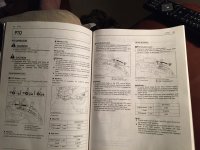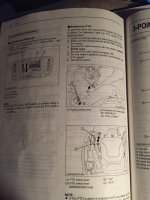Porchfan
Silver Member
- Joined
- May 11, 2013
- Messages
- 125
- Location
- Oak Ridge, NC
- Tractor
- 2013 Kubota B2650 HSD, 2020 BX2380, JD LX-277 lawn tractor 2000
So I picked up a used Mackissic PTO chipper on CL from a local farmer and ran it last week a few times. The chipper knives were pretty dull and it was a struggle to chip anything larger than about 2 inches. I orderd new knives and it ran much better after I installed them per the install instructions. I chipped a 4 in sapling I had cut and it sucked it up pretty well. Check it out. I have a few questions though:
I was wondering what's the best way to engage the PTO for a chipper - at medium RPMs? I noticed the whole chipper moved due to the torque on the PTO when I engaged it when it was set to 540.
Maybe I should start at a lower rpm and then increase it as it spins up?
When it ran on my tractor under heavy load ( 4in limb) it slowed the 540 RPMs a bit. The PTO HP is 19.5 on the B2650.
Should I set the RPMs a bit high on the rear PTO before chipping these larger limbs?
Thanks,
porch
I was wondering what's the best way to engage the PTO for a chipper - at medium RPMs? I noticed the whole chipper moved due to the torque on the PTO when I engaged it when it was set to 540.
Maybe I should start at a lower rpm and then increase it as it spins up?
When it ran on my tractor under heavy load ( 4in limb) it slowed the 540 RPMs a bit. The PTO HP is 19.5 on the B2650.
Should I set the RPMs a bit high on the rear PTO before chipping these larger limbs?
Thanks,
porch

